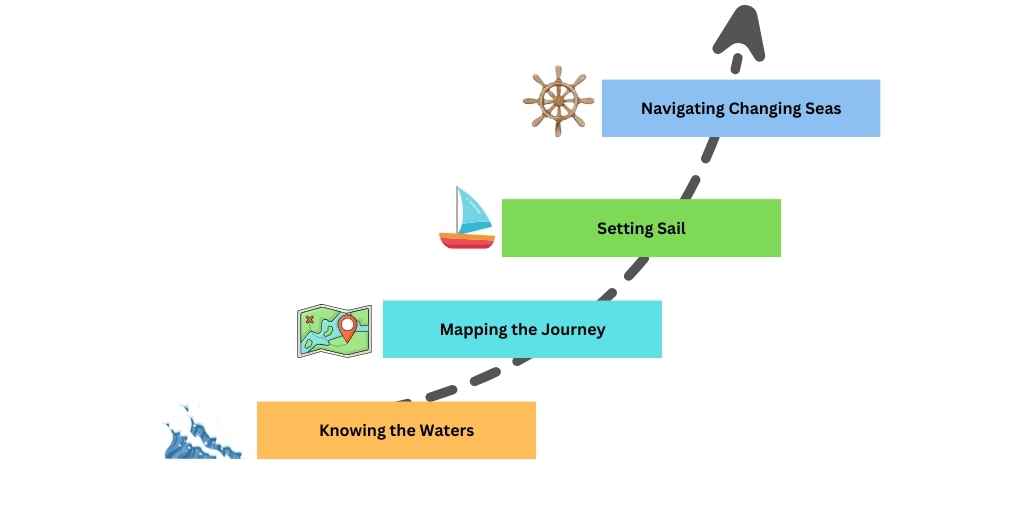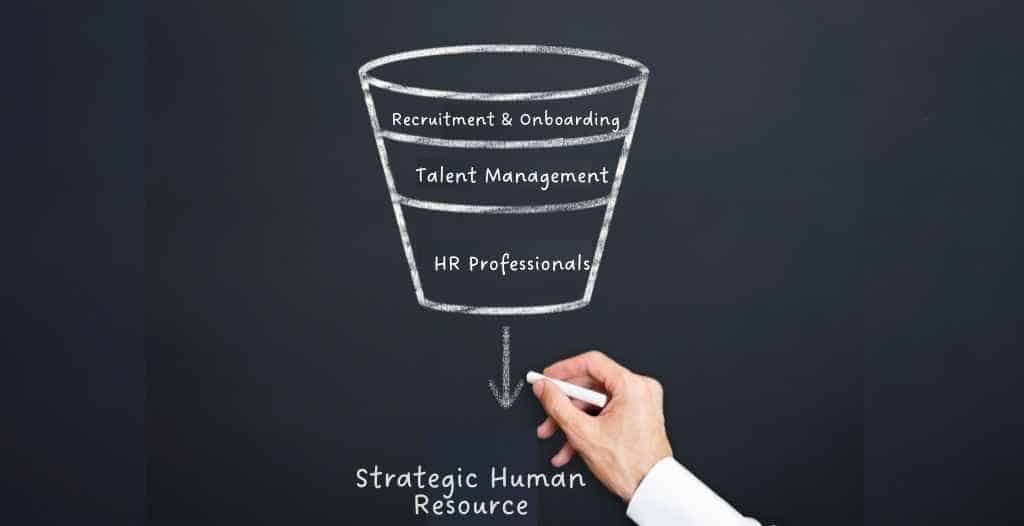Strategic Human Resource Management, Cracking the Code
Strategic human resource management (SHRM) is a dynamic approach to harmonizing human resource strategies with overarching company goals, transforming the workforce from a collection of functional components into a constantly evolving team of capital assets that improve business performance.
Table of Contents
ToggleThis strategic alignment fosters a culture of innovation, engagement, and resilience, ensuring the organization’s journey is not only about survival but about thriving in the modern market.
What is Strategic Human Resource Management?
Say goodbye to the era where the Human Resources department was pigeonholed into paperwork and routine tasks.
Human resources have transformed into strategic human resources management (SHRM), a strategic approach to developing and empowering employees by offering them a stake in organizational success.
From recruitment and onboarding through employee training, performance evaluations, talent management, and emphasis on work-life balance, strategic human resource management offers better company performance through employee engagement.
To achieve this, strategic HR management is the art of seamlessly integrating human resources with the core business strategies, ensuring that the workforce marches in lockstep with the company’s ambitions and growth trajectory.
This approach marks a departure from the antiquated HR playbook, sailing instead toward a future where strategic foresight and meticulous planning steer the company toward organizational excellence.
The Foundation of Strategic Human Resources Management
Strategic HR management stands at the core of organizational achievement, emphasizing the alignment of HR initiatives with business strategies.
Integration is essential for aligning HR practices with the company’s goals, fostering a unified approach to achieving success and ensuring longevity.
Aligning HR Strategy with Business Strategy
The cornerstone of effective strategic HR management is its alignment with the company’s goals and business strategy.

This synergy ensures that every HR initiative, from workforce acquisition and talent management through performance management, propels the company toward its long-term objectives.
The strategic HR planning process requires knowledge of business initiatives and the resources needed to deliver on them, ensuring upskilling training and recruitment move in lock-step with business needs.
Charting the Course: The Strategic HR Planning Process
Navigating through the strategic human resources planning journey is akin to embarking on a meticulous expedition, charting a course for the organization’s future.
This odyssey unfolds in several stages, each requiring a deep dive into the company’s core requirements, sketching out a strategic HR blueprint, and setting into HR strategies that bolster business results into motion.
This iterative process is designed to be adaptive, continually adjusting to the organizational demands and workforce dynamics. Let’s unpack the stages of this strategic voyage:

Knowing the Waters
The first step in executing a human resource management strategy is thoroughly analyzing the organization’s current state readiness against future needs.
This involves understanding the gaps in the existing workforce, forecasting future human resource needs, and identifying the skills required to achieve the company’s strategic goals.
This can only be done by engaging with other departments to determine their needs for the coming period and by identifying business initiatives that are expected to bring a competitive advantage to the company.
When innovative solutions are part of the company’s business strategy, it’s important to ensure staff is trained and offered opportunities to participate.
Mapping the Journey
With a clear understanding of the terrain, the next phase is drafting a detailed strategic human resources management plan.
The blueprint outlines the strategic human resource services needed and how they will operate:
Recruitment
Onboarding
Training and development
Retention
Deployment of the workforce in alignment with the organization’s objectives.
Setting Sail
The implementation phase is where the rubber meets the road.
Initiatives outlined in the HR strategic plan are implemented to provide better business performance and enhance employee engagement and productivity.
Navigating through Changing Seas
In a business environment that is increasingly volatile, uncertain, complex, and ambiguous (VUCA), the strategic HR planning process doesn’t end with implementation.
Strategic human resource management is a cyclical journey of continuous improvement, where strategies are regularly reviewed and refined to adapt to new challenges and opportunities.
Key Components of Strategic HR Management
Strategic human resource management is built on several key components that, when executed effectively, can significantly enhance company performance and employee satisfaction. Let’s explore these elements.

Recruitment and Onboarding
Finding the talent that aligns with the overall business strategy and future workforce needs and welcoming them into the organization is a crucial component of a human resource management strategy that works.
This is an area where operational and strategic management are closely aligned.
Performance Management
Performance management goes far beyond the annual review.
It’s an ongoing process where goals are aligned, performance is assessed, and feedback is given to improve employee performance and engagement.
Effective performance management ensures that employees’ efforts align with business goals, leading to better business outcomes and increased job satisfaction.
Talent Management and Employee Engagement
Talent management is critical for retaining top talent and ensuring they remain motivated and committed.
Strategic HR management ensures training, career development opportunities, and a positive work environment that fosters employee engagement.
By investing in talent management, companies can build a strong workforce that is capable of driving business growth and achieving strategic objectives.
HR Strategy as a Competitive Advantage
Strategic human resource management can provide a company with a competitive advantage by developing HR strategies that are unique and difficult for competitors to replicate.
From innovative recruiting practices to unique employee development programs, HR strategies can contribute to a company’s unique selling proposition and help it stand out in the market.
The Role of HR Professionals in Strategic Planning
HR professionals play a crucial role in strategic HR management planning, transitioning from their traditional administrative functions to becoming strategic partners in the business.
This demonstrates key changes to role of HR, as it has evolved from focusing on administrative tasks to contributing to strategic planning and decision-making.
HR professionals are now expected to understand the business’s strategic goals and develop HR strategies that align with these objectives.
They are strategic partners who can offer insights on human capital and its impact on the organization’s success.
Strategic HR Tools and Techniques
To implement strategic HR effectively, several tools and techniques can be employed. These help HR professionals analyze the current situation, plan for the future, and measure the impact of HR activities on the organization.

SWOT Analysis in HR
SWOT analysis is a strategic planning tool that helps HR professionals identify the Strengths, Weaknesses, Opportunities, and Threats related to the organization’s human capital.
It provides insights that can be used to develop strategic HR plans that leverage strengths, address weaknesses, capitalize on opportunities, and mitigate threats.
People Analytics: The Game Changer
People analytics has emerged as a game-changing tool in strategic HR.
Data related to recruitment, performance, and employee satisfaction is analyzed by HR professionals who can make evidence-based decisions to improve HR strategies and business outcomes.
Setting Sail: Implementing a Strategic HR Plan
Bringing a strategic HR plan to life is akin to navigating a ship through uncharted waters. It demands not just a map but a skilled crew, a keen eye on the compass, and the agility to adjust sails as the journey unfolds.
Here’s how to set sail:

Anchor in Alignment
Before setting out, it’s crucial that HR leaders fully grasp the organization’s overall business strategy and objectives. This foundational step ensures that the HR plan is not sailing in the wrong direction but is firmly anchored in the business’s long-term vision and goals.
HR strategic planning cannot be achieved without being in lock step with business strategy planning and is an ongoing effort that HR personnel needs to be comfortable performing.
Charting the Course: Developing HR Strategies
With the destination in mind, the next step is to chart the course.
This involves creating specific HR strategies for talent acquisition, development, retention, and engagement that support the overarching business strategy. It’s about plotting an ambitious and navigable route, ensuring that HR initiatives are geared towards enhancing organizational capacity and driving business growth.
Building the Crew: Stakeholder Engagement and Communication
Implementing a strategic HR plan is a team effort.
Engaging stakeholders representing a crew with diverse skills and perspectives is critical to the effort.
Effective communication about the plan’s objectives, benefits, and expected outcomes is crucial to garnering support and ensuring everyone is rowing in the same direction.
Setting Sail: Human Resource Strategic Plan Execution
With the course charted and the crew ready, it’s time to set sail.
Execution involves the practical implementation of the HR strategies outlined in the plan.
This step requires meticulous attention to detail, from recruiting the right talent to launching development programs to enhance the workforce’s resource management capability to meet current and future challenges.
It also means ensuring HR personnel are trained and aligned with the program.
Navigating the Waters: Monitoring and Adjusting
The sea of business is ever-changing, with new challenges and opportunities emerging at every turn.
Continuous performance-based monitoring of the HR plan’s impact on business success and the return on investment in human capital is essential.
This includes tracking key metrics, assessing whether the HR initiatives are delivering the desired outcomes, and being ready to adjust the sails—whether that means tweaking existing strategies or charting a new course entirely.
Land Ho! Review and Refine
The journey doesn’t end upon reaching the initial destination.
In the world of strategic HR, success is about continuous improvement.
Regularly reviewing the plan’s effectiveness and refining HR strategies ensures that the organization remains agile and responsive to internal and external changes.
It’s about learning from the voyage, celebrating the wins, and preparing for the next adventure with insights and strategies that are sharper and more focused.
The Business Value of Strategic Human Resources
Strategic Human Resource Management (HRM) stands at the forefront of driving significant improvements in employee and corporate performance.
This pivot from traditional HR practices to a more strategic and integrated approach brings forth a myriad of benefits, directly influencing the bottom line and overall organizational health.
Strategic Human Resources offers business value in a variety of ways:
Enhanced Employee Performance: Strategic HR focuses on aligning employee goals with the company’s objectives, leading to a more motivated and efficient workforce. By investing in targeted development programs and performance management systems, companies can significantly boost productivity levels across all departments.
Increased Employee Engagement: Organizations can cultivate a more engaged workforce through strategic HR initiatives that prioritize employee satisfaction and well-being. Engaged employees are more likely to invest discretionary effort in their work, leading to higher quality outputs and innovation. Employee retention improvements will also be seen.
Improved Financial Performance: The cumulative effect of higher employee performance and engagement often translates into better financial results. Companies with strategic HR practices tend to enjoy increased profitability, reduced costs associated with turnover, and enhanced shareholder value.
Agility and Flexibility: Strategic HR enables organizations to adapt and respond to market changes. Companies can pivot more efficiently and maintain a competitive edge by foreseeing future skill requirements and continuously developing their workforce.
Attracting and Retaining Talent: A comprehensive strategic HR plan includes robust talent management strategies that help attract top talent while retaining high performers.
Fostering a Strong Company Culture: Through its efforts, strategic human capital management helps shape and maintain a positive company culture, acting as a foundation for ethical behavior, corporate values, and a sense of unity, which are essential for long-term success.
Risk Management: By incorporating compliance and risk management into strategic HR practices, organizations can mitigate legal and operational risks associated with labor laws, workplace safety, and ethical practices.
Business Strategy Execution: Perhaps most importantly, strategic HR ensures that human resource capabilities align with the business strategy. This alignment means that the organization is well-equipped to execute its strategic plans, achieve its goals, and realize its vision for the future.
Conclusion

Strategic human resource management is essential for organizations looking to achieve their strategic objectives and gain a competitive edge in the market.
By aligning HR strategies with business goals, investing in employee development, and leveraging strategic HR tools and techniques, HR personnel can help enhance business performance by building a strong, motivated workforce.
The journey from traditional HR practices to strategic HR management may be challenging, but the rewards are well worth the effort.





